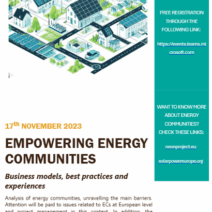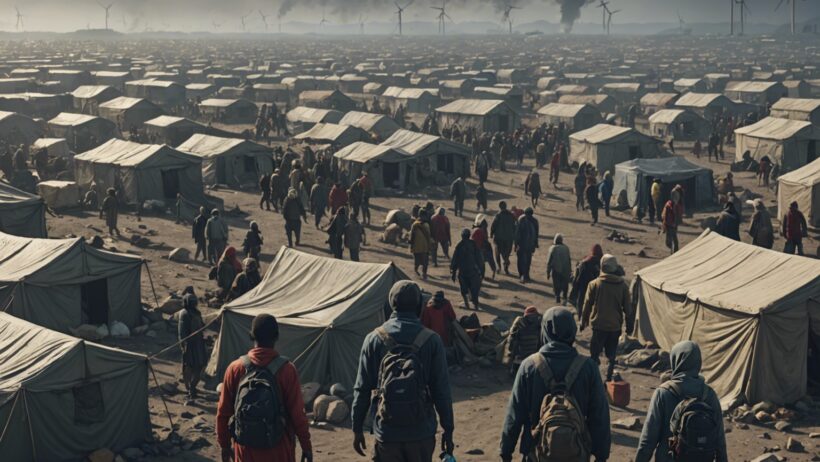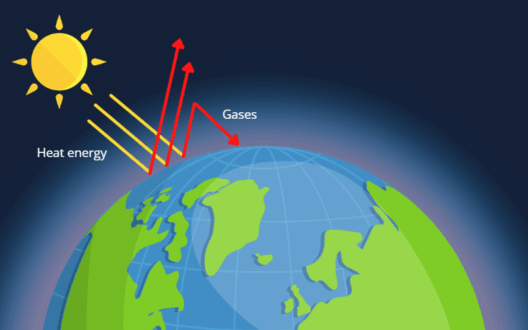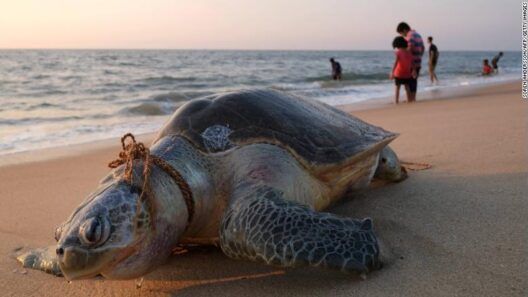As the numinous sun rises each morning, it casts golden rays over a planet at war with itself. Conflict is not merely confined to borders or ideologies, for now, climate change emerges as an insidious adversary that not only alters landscapes but also disrupts lives. This phenomenon gives rise to climate refugees — individuals and families uprooted as their once-hospitable habitats succumb to the relentless encroachments of climate extremes.
The term “climate refugee” conjures images of vast and desolate landscapes abandoned in haste, yet the reality is much more nuanced. These refugees are often forced from their homes due to a constellation of factors: rising sea levels, devastating droughts, catastrophic storms, and the creeping desertification of once-fertile land. They embody a paradox of endurance and vulnerability, poised on the fulcrum of survival in a rapidly changing world.
In the grand tapestry of human existence, migration is an ancient thread woven through the history of civilizations. Yet, the narratives of climate refugees present a unique tableau — a painting marred by a double-edged sword of hope and desperation. When storms become more ferocious and waterways swell beyond their natural banks, entire communities are washed away, leaving behind empty shells where vibrant lives once flourished.
The plight of Bangladesh provides a poignant illustration of this burgeoning crisis. With the rising waters of the Bay of Bengal swallowing coastlines, millions are at risk of dislocation. The interplay between human perseverance and nature’s wrath is palpable; these citizens find themselves grappling with a future rendered uncertain by forces beyond their control. Here, the concept of a “climate refugee” transmutes from abstraction into stark reality, as families forsake their ancestral homesteads for the uncertain promise of safer grounds.
Yet, displacement is not insular to underdeveloped nations. Wealthy countries, too, are beginning to feel the tremors of climate-induced migration. From wildfires sweeping across the western United States to hurricanes battering the eastern seaboard, the facade of security is cracking under the strain of environmental degradation. When the lush forests transform into infernos and cherished coastline cities fall victim to flooding, a migration tide builds on the shores of affluence — a harbinger of a future where no one is shielded from the ravages of climate change.
As the phenomenon of climate refugees escalates, so too does the tension between nations. Hostility burgeons as countries grapple with the responsibilities that come with welcoming those who flee ecological disasters. A paradigm shift is required; an understanding that the international community is inherently connected. Simply put, the plight of one nation cannot be isolated from the plight of another. These refugees embody an urgent reminder of our shared humanity and the communal nature of this struggle.
Furthermore, the legal framework surrounding climate refugees remains murky at best. Existing international laws, primarily designed to protect political asylum seekers, do not adequately address the complexities arising from environmental disasters. Vulnerable populations seeking refuge often find themselves ensnared within an intricate web of bureaucracy, relegated to a limbo where their humanitarian needs clash with the rigid doctrines of immigration policy. The need for a revamped legal acknowledgment of climate-induced dislocation becomes critically urgent.
Climate refugees, however, are not merely statistics. Each displaced individual carries with them a rich history and an indomitable spirit. Their experiences illuminate the broader narratives of resilience in the face of adversity. Communities come together to support one another, drawing from wells of solidarity and shared suffering. Such grassroots movements reveal the human capacity for empathy, standing as a counterpoint to the apathy that often pervades global discussions on climate change.
Admittedly, the emotional toll on these populations can be monumental. The psychological scars of displacement can linger long after physical needs are met. It is incumbent upon societies that accept these refugees to ensure not only their survival but also their integration into new communities. This integration should not merely concern economic survival; it must encompass social acceptance and cultural respect, for the nurturing of identity is essential for healing.
Moreover, as governments and organizations begin to recognize the complexity of this dislocation, a new dialogue emerges — one that encourages mitigation and adaptation. The proactive measures taken today must focus on empowering local communities to build resilience against the onslaught of climate effects. Sustainable infrastructures, disaster preparedness programs, and environmental restoration initiatives can serve as bulwarks against forced migration, ensuring the preservation of homes and livelihoods.
As we stare into the face of a warming world, it becomes all the more apparent that climate refugees are not an isolated phenomenon but a ubiquitous aspect of our global tapestry. They invoke a haunting truth: the earth’s shifting climate demands our immediate attention, understanding, and action. In the throes of adversity, these individuals illustrate the power of the human spirit while challenging us to cultivate compassion, awareness, and change. The future landscape of our planet will be inevitably shaped by how we address the needs of those who have lost so much to the ferocity of climate devastation.
Thus, as we navigate the treacherous waters of climate change, let us not merely bear witness to the plight of climate refugees but actively engage in the pursuit of collective solutions. The masques of our fates are interlinked; it is through solidarity, understanding, and commitment to activism that we might carve a path toward a more equitable future. Only then can we turn the tide, creating a world where individuals are no longer forced to abandon the familiar for the unknown but are instead stewards of resilient habitats that honor our shared existence on this fragile planet.








